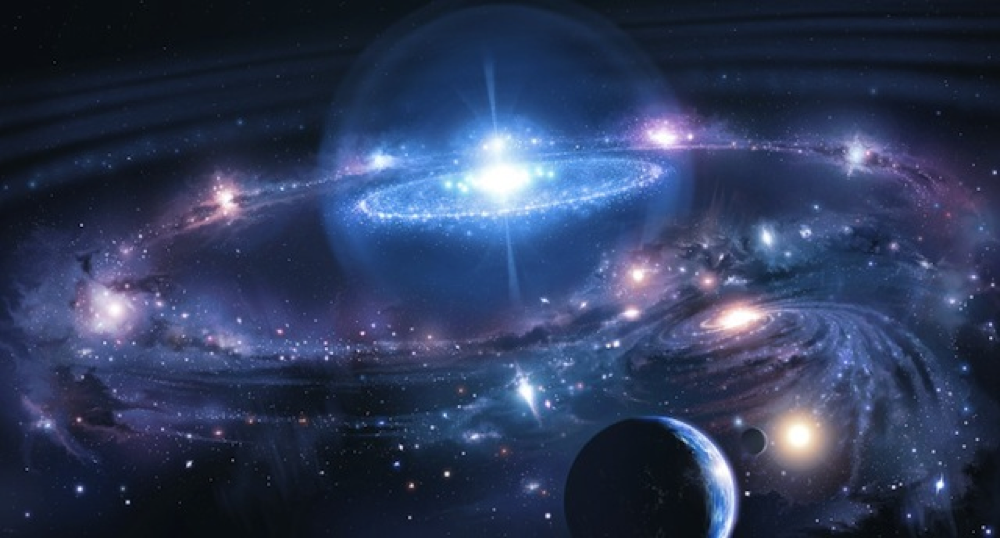What is the multiverse?
The multiverse might seem like the stuff of movies and games. Marvel and the Avengers have toyed with the multiverse, then there was that super cool Spiderverse animated movie last year with different Spider-men from different parallel universes; they had different powers and looked different, but basically each universe had its Spider-man. But those were movies, right? Is there such a thing as a multiverse? I mean, the term “universe” in itself says about all there was and all there will ever be in it. It’s a “uni(que)verse”. Could there be more, like in a (multi)verse? What is that? Our ability to gather information about the creation of our universe is limited, so how can we tell more about the universe, you might wonder. Let’s see!

What is the multiverse?
The multiverse is a theoretical physics idea that our Universe is just a tiny little region of a much larger space which contains an infinite number of other Universes. Although it has been established that the universe is infinite, there is only a limited part of it that we can observe and even less limited is our capacity of observing a multiverse. That is why I have called it “an idea”. The existence of the multiverse is mostly based on speculative thinking and maybe a little bit of wishful thinking.
What we know so far based on science?
One thing we know is that the Universe is expanding. We know this because we can measure the distances between stars and galaxies and we can tell that they’re getting far away from each other. Based on this knowledge, we can speculate that the universe has been smaller and much denser in the past. Extrapolate back enough before gravity had the time to clump things together and we arrive at the moment of the Big Bang. However, the Big Bang can’t explain everything that happened with our universe.
This is where a new theory takes center stage: cosmic inflation. According to cosmic inflation, our Universe was filled with inherent energy that belonged to space itself before the Big Bang. This inherent energy caused the space to expand so rapidly, relentlessly, and exponentially until the inflation ends and almost all of that energy gets converted into matter. Then the Universe reheats and the Big Bang starts. However, the Big Bang is not the very beginning.
If the Big Bang was the very beginning of all there is, then this universe would have the same properties and laws everywhere and we couldn’t really speak of a multiverse. However, there is something called a quantum.
Enter quantum fields
Quantum physics says that everything that physically exists must be inherently quantum in nature, inflation included. So, if inflation has all the properties of quantum fields, then it should:
- have uncertainties inherent to them
- function as a wave
- have different values that can spread over time
And here is the trick. If cosmic inflation is quantum, then it means this inherent type of energy ends in some “pockets” of the Universe and then continues on, giving rise to other regions of space. Inflation didn’t end everywhere at once. It starts and ends in disconnected locations at different given times. So, we can deduct that there are enormous other regions of space where inflation does what it has done in our universe: give rise to a Big Bang. However, these spaces cannot encounter each other, meaning we cannot get a sign of another nascent universe at this time, because we’re separated by regions of inflating space.
So, the part of the universe that we can observe today is just a region where inflation has ended, but through deduction, we can say that there are more unobservable Universes beyond that, with the exact same story as our universe, all because of the cosmic inflation energy giving rise of Bing Bangs. So, this is the idea of the multiverse.
The idea of the multiverse stands on two theoretical physics principles
The idea that everything that exists is quantum in nature and the properties of cosmic inflation are the two major theoretical physics principles that stand at the foundation of the idea of the multiverse. However, we have no way to prove or measure this multiverse, as there are huge parts of our universe that we still don’t know anything about. However, the theories of inflation and quantum physics have been demonstrated in the past and still hold water in modern science. So, if they are right, then there is a multiverse and we’re living in it.
So, to conclude, the multiverse is basically an idea and speculation that there is a large number of other Universes arbitrarily scattered around in space. Maybe in time we’ll have valid ways of gathering data about our universe and the multiverse.
